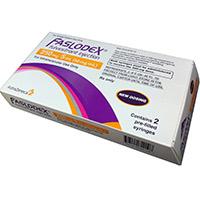Fulvestrant Disease Interactions
There are 2 disease interactions with fulvestrant.
Fulvestrant (applies to fulvestrant) hepatic dysfunction
Major Potential Hazard, Moderate plausibility. Applicable conditions: Liver Disease
Fulvestrant is metabolized primarily in the liver. A dose of fulvestrant 250 mg is recommended in patients with moderate hepatic impairment (Child-Pugh class B). Care is recommended when using fulvestrant in patients with severe hepatic impairment (Child-Pugh class C) as the agent has not been studied in these patients.
References
- (2002) "Product Information. Faslodex (fulvestrant)." Astra-Zeneca Pharmaceuticals
Fulvestrant (applies to fulvestrant) bleeding
Moderate Potential Hazard, Moderate plausibility. Applicable conditions: Thrombocytopenia
Fulvestrant injection is administered intramuscularly and site related events have been reported. It is recommended to use caution in patients with bleeding diatheses, thrombocytopenia, or anticoagulant use. In addition, caution should be taken while administering fulvestrant injection at the dorsogluteal injection site due to the proximity of the underlying sciatic nerve.
References
- (2002) "Product Information. Faslodex (fulvestrant)." Astra-Zeneca Pharmaceuticals
Fulvestrant drug interactions
There are 3 drug interactions with fulvestrant.
More about fulvestrant
- fulvestrant consumer information
- Check interactions
- Compare alternatives
- Reviews (51)
- Side effects
- Dosage information
- During pregnancy
- Drug class: estrogen receptor antagonists
- En español
Related treatment guides
Drug Interaction Classification
| Highly clinically significant. Avoid combinations; the risk of the interaction outweighs the benefit. | |
| Moderately clinically significant. Usually avoid combinations; use it only under special circumstances. | |
| Minimally clinically significant. Minimize risk; assess risk and consider an alternative drug, take steps to circumvent the interaction risk and/or institute a monitoring plan. | |
| No interaction information available. |
Further information
Always consult your healthcare provider to ensure the information displayed on this page applies to your personal circumstances.


